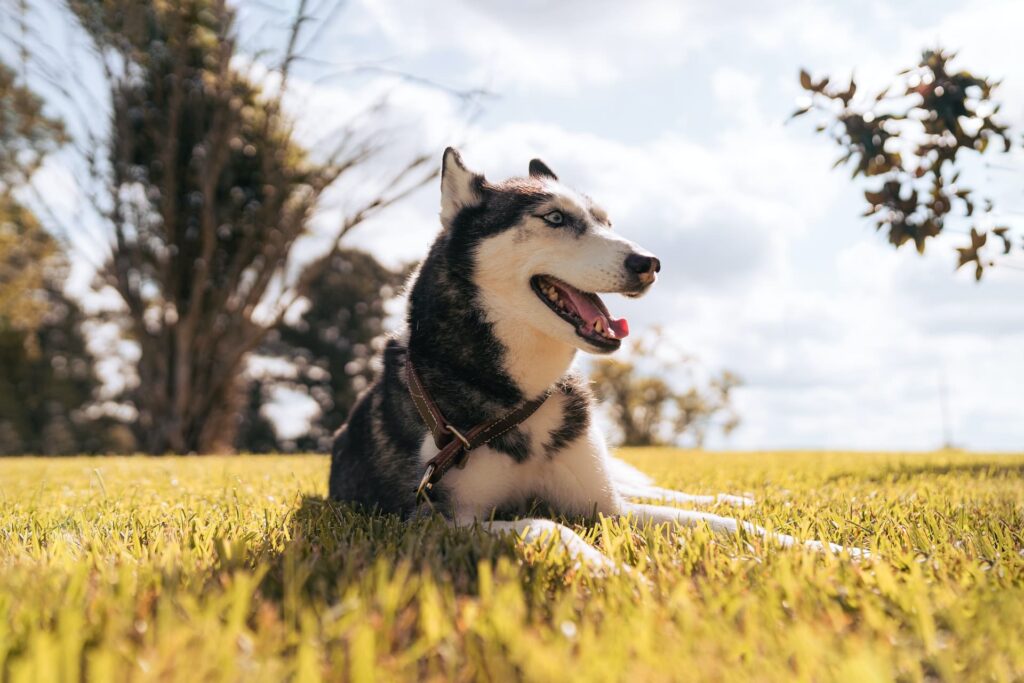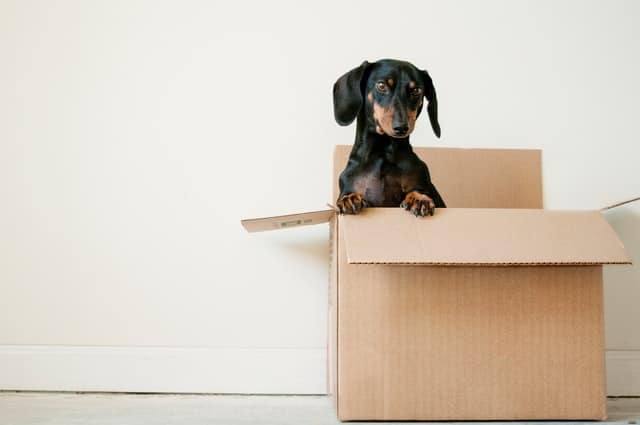As a rule, a Siberian Husky needs to be exercised twice a day for several hours. This should ideally be done in the forest or where he can walk without a leash. The Siberian Husky needs enough physical and mental exercise.
Your pet needs daily exercise. In addition, your dog can romp around in the garden or you can go to a fenced exercise area.
Your dog needs to go outside at least twice a day.

Beyond that, you can decide according to your dog whether you go more often and how long your rounds will be.
Walking – When does the dog need to go out?
The question of how often a dog should go out depends crucially on its individual needs. Some dog breeds need a lot of exercise due to their special urge to move, while others are content with smaller rounds.
When a dog needs to go outside is also very individual. Decisive factors include cleanliness and walk training.
As a rule of thumb, however, dogs can last five to six hours before the next business is due.

This also tells you how often a dog should go out every day. According to this, you should plan at least four to five rounds per day.
Ideally, you should schedule your dog’s walks so that he does not have to go out at night. In this context, it is important that the most urgent walk is in the morning. The walk after getting up must be integrated into the daily schedule.
As a rule, a routine rhythm is established after a certain time, so that the morning round takes place at 6:00 a.m. every day, for example.
Dogs make themselves known when they have to go out
Normally, every dog makes itself known as soon as it has to go out. However, this only applies to dogs that have already completed their cleanliness training. It is not yet to be expected from puppies. As soon as the intervals between rounds become too long, dogs start whining, possibly barking, are restless and otherwise draw attention to themselves.
Some dogs may scratch at the door, others may put the leash at their master’s feet. Pay attention to how your dog makes itself known and don’t let it get that far in the first place.
Your dog will be in better health if you react before your dog even contacts you.
If you are going to be away for a long time and your dog has to wait for you at home, find out here how long your dog can be left alone.
Whether young or old – all dogs need to go out.
Puppies and seniors need more exercise
A puppy stays with the breeder until at least 8 weeks. At least with a good breeder. After that, you can take your dog with you.
Once you have arrived at your new home, the first few weeks are especially important. During this time, you must pay special attention to the walks. Everything needs to be explored, from traffic to the forest.
Experience shows that puppies need more walks than adult dogs. Until they are truly house-trained, it is recommended that you take your fur friend out at least every two hours.
This way puppies learn that they have to do their business outdoors and not indoors.
The amount of time between each round can be extended individually over time. In addition to puppies, seniors also need to go outside more often.
Your dog is getting old and counts as a senior dog if your dog is over 12 years old.
With age, dogs get difficulties to control their urge for a longer period of time. It’s a good idea to cater to your dog’s individual needs.
You could take your dog out more often, but for shorter periods.
If the dog doesn’t go outside – What can happen?
If your dog doesn’t get out enough, it will sooner or later do its business indoors.
However, what is much more decisive and to the dog’s disadvantage – lack of exercise leads to considerable limitations. Dogs that do not get out or only get out too rarely are often overweight, which has an impact on their health.
Moreover, in such cases dogs tend to behave destructively, for example by destroying things or starting to go berserk.
It can happen, among other things, that shoes or furniture are chewed up. Furthermore, the lack of exercise leads to aggression towards people and other animals in the long run.
Some dogs start to withdraw because they are not stimulated enough physically and mentally. In this case, the behaviour resembles a typical depression.
Other dogs, on the other hand, become hyperactive. Finally, the muscles of the affected dog can stiffen, which leads to considerable pain. Further illnesses of the four-legged friend are also possible due to lack of exercise and too few walks.
For example, bladder or kidney diseases can occur due to continuous stopping.
To prevent this from happening to your four-legged friend, make sure he gets enough exercise!
If you don’t have enough time, you can look for someone who will walk your dog for a small fee.
Typical breed characteristics of the Siberian Husky
The Husky – often known by this short name – is one of the oldest dog breeds. The Taimyr wolf is closer in kinship than is the case with other dog breeds.
Because of this ancestry and because of its original home, it can survive at minus 50 degrees.
- Character: friendly, affectionate, intelligent, sociable, very teachable
- Size 53 – 60 cm males, 50 to 56 cm females
- Weight 21 – 27 kg males, 16 – 22 kg females
- Colours – all colours are permitted
- Life expectancy up to 12 years
The Husky is on the one hand suitable as a family dog and on the other hand a perfect sledge dog. In his homeland, he enabled the Eskimos to travel long distances through the icy wind to the next village.
And that is exactly what distinguishes him: His tremendous stamina, which wants to be satisfied. The husky is known in this country as a lovers’ dog breed. Moreover, they hardly bark and have friendly dispositions.
Its job is to move around, so it is not suitable as a guard dog, as it would be far too friendly towards intruders.
Care and training
The Husky needs a consistent hand, lots of exercise, understanding and attention. He likes to put his energy into work.
Instead of sledding, canicross (pulling a wheeled vehicle), bikejöring (pulling a mountain bike), skijöring (pulling a skier) will also work out. He definitely needs a garden, several hours of exercise every day and always new ways to use his energy wisely.
Over long distances, the Husky can also be exercised on a bicycle, for example.
Without sufficient exercise and in all weathers, the dear Husky can otherwise become quite a stubborn dog who does what he wants.

However, his hunting instinct should not be forgotten. This is very strong and should be kept in check from an early age. He will hunt and eat chickens and ducks if you don’t stop him!
Huskies are undemanding eaters and are content with what they get to eat. Normally, a food mix for him can consist of 2/3 meat and 1/3 vegetables (also dog flakes, cooked rice).
As the coat changes twice a year, you must brush him well.
For whom is the Husky suitable?
With a Husky you will get a lot of exercise and workout in your home. A good portion of discipline and experience with dogs is required for a Husky.
A house with a garden is a must when keeping a Husky. This way, small training sessions can be carried out in the garden. Keeping a Husky indoors is difficult, so the lack of space outside must be compensated for by much more exercise.
The Husky needs a lot of movement and exercise.
If you can adapt to his needs and have fallen in love with this dog breed, you should still remember to choose only a reputable breeder.
Here we have summarized our most popular articles in a great overview:



